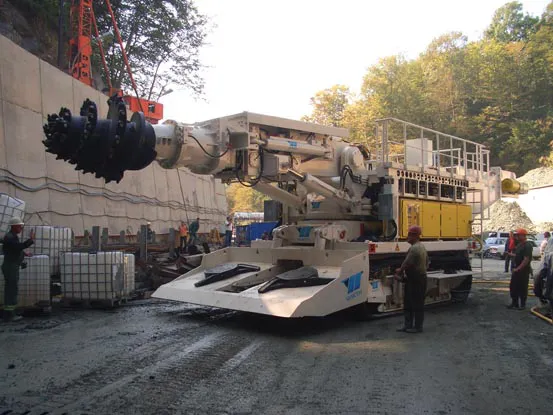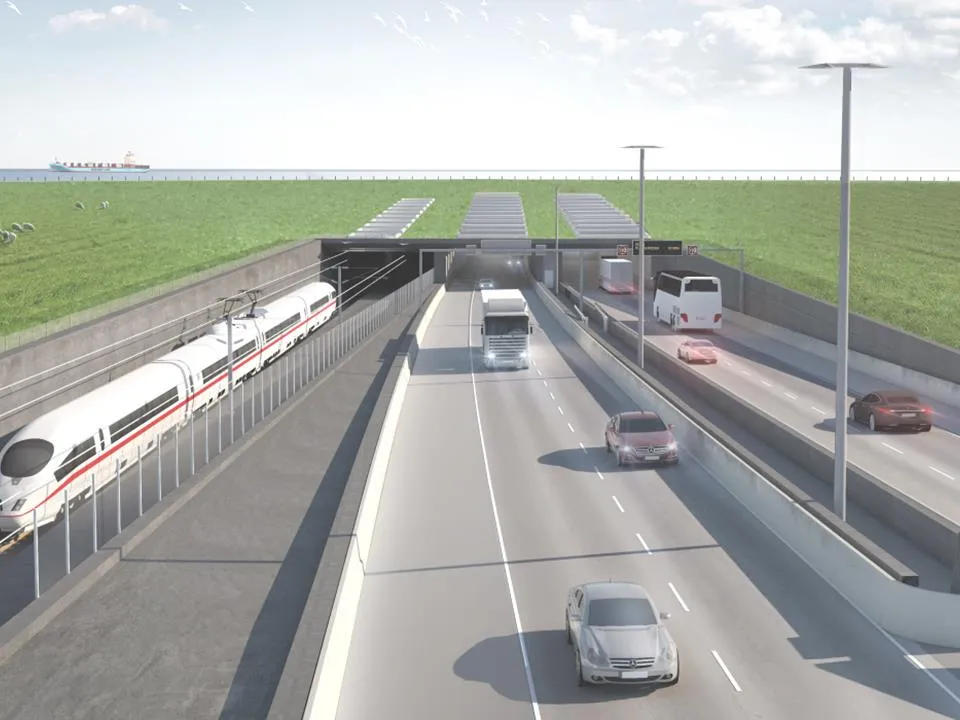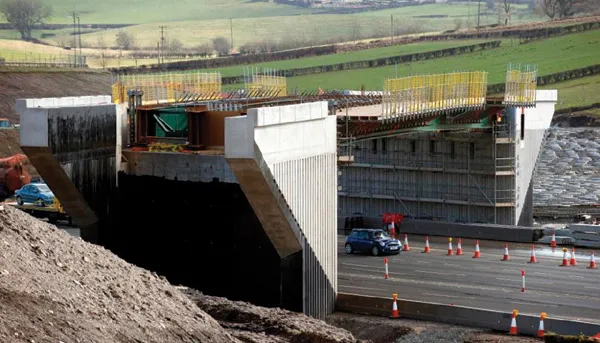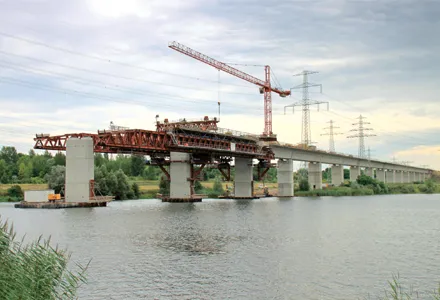In preparation for the 2014 Olympic Winter Games, the Black Sea health resort of Sotschi, Russia, is tackling its growing traffic jam problems.A 13km bypass and a new main road passing mainly under the city involves the construction of 15 tunnels and a number of bridges and flyovers.
February 29, 2012
Read time: 3 mins

In preparation for the 2014 Olympic Winter Games, the Black Sea health resort of Sotschi, Russia, is tackling its growing traffic jam problems.
A 13km bypass and a new main road passing mainly under the city involves the construction of 15 tunnels and a number of bridges and flyovers.
298 PERI has developed and supplied a tunnel formwork carriage for construction of the six emergency parking bays (three in each direction) in a 2,607metre long tunnel on the bypass.
Here, the two-lane tunnel tube is widened from 10.8m by around 3.5m, and the biggest challenge was the design of the lifting and lowering units with integrated horizontal adjustment device.
"Because the formwork carriage was to be moved to the next emergency bay through the already finished standard cross-sections of the tunnel, this meant that the size of the complete construction had be reduced quite considerably," says PERI.
The tunnel formwork carriage developed was based on the VARIOKIT modular construction kit (the use of standardised serial components is an advantage for the contractor because the system elements can also be used for future formworking operations).
For striking and the rail-guided moving procedure to each subsequent casting segment of a parking bay, the side formwork could be folded hydraulically and the complete formwork carriage was able to be lowered. In this way, each of the emergency parking bays could be constructed in six 9m long concreting sections in weekly cycles.
To reduce the formwork carriage (from 14.3m wide to 10.10m, height from 8.7m to 7.6m) to move to the next parking bay, PERI engineers developed an accurately defined working sequence by which the formwork segments could be folded and lowered to allow passage through the substantially smaller standard cross section.
"The combination of load frames, heavy duty spindles, walers and GT 24 formwork girders ensured high utilisation and load-carrying capacity of the formwork carriage. The striking and moving process could be safely and quickly carried out by construction site personnel although all of the technology was completely new to them," says PERI.
All the tunnels on the partially-completed Stoschi bypass have been constructed using four Wirth Paurat roadheaders (heavy duty machines specifically designed for tunneling). Three of the four machines are operated by the OOO Tonneldorstroy (TDS) company, which has placed another order with Wirth for a Type T3.20 roadheader weighing about 120tonnes and with 300kW installed cutting power.
Instead of blasting the rock with explosives, the cutter head of the roadheader excavates precisely the profile that is required, without unnecessary overbreak or rock disturbance.
A 13km bypass and a new main road passing mainly under the city involves the construction of 15 tunnels and a number of bridges and flyovers.
Here, the two-lane tunnel tube is widened from 10.8m by around 3.5m, and the biggest challenge was the design of the lifting and lowering units with integrated horizontal adjustment device.
"Because the formwork carriage was to be moved to the next emergency bay through the already finished standard cross-sections of the tunnel, this meant that the size of the complete construction had be reduced quite considerably," says PERI.
The tunnel formwork carriage developed was based on the VARIOKIT modular construction kit (the use of standardised serial components is an advantage for the contractor because the system elements can also be used for future formworking operations).
For striking and the rail-guided moving procedure to each subsequent casting segment of a parking bay, the side formwork could be folded hydraulically and the complete formwork carriage was able to be lowered. In this way, each of the emergency parking bays could be constructed in six 9m long concreting sections in weekly cycles.
To reduce the formwork carriage (from 14.3m wide to 10.10m, height from 8.7m to 7.6m) to move to the next parking bay, PERI engineers developed an accurately defined working sequence by which the formwork segments could be folded and lowered to allow passage through the substantially smaller standard cross section.
"The combination of load frames, heavy duty spindles, walers and GT 24 formwork girders ensured high utilisation and load-carrying capacity of the formwork carriage. The striking and moving process could be safely and quickly carried out by construction site personnel although all of the technology was completely new to them," says PERI.
All the tunnels on the partially-completed Stoschi bypass have been constructed using four Wirth Paurat roadheaders (heavy duty machines specifically designed for tunneling). Three of the four machines are operated by the OOO Tonneldorstroy (TDS) company, which has placed another order with Wirth for a Type T3.20 roadheader weighing about 120tonnes and with 300kW installed cutting power.
Instead of blasting the rock with explosives, the cutter head of the roadheader excavates precisely the profile that is required, without unnecessary overbreak or rock disturbance.









